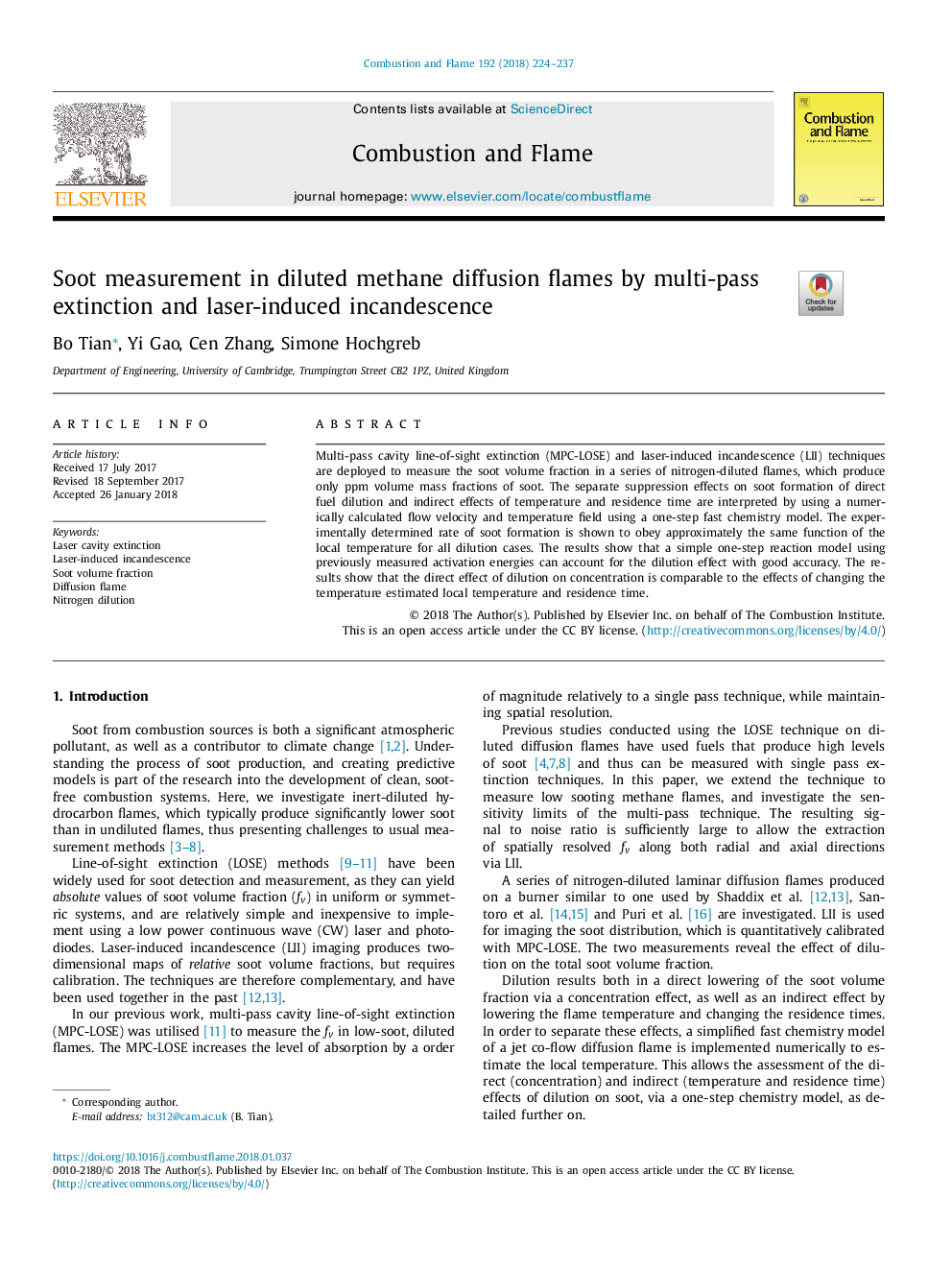| Article ID | Journal | Published Year | Pages | File Type |
|---|---|---|---|---|
| 6593669 | Combustion and Flame | 2018 | 14 Pages |
Abstract
Multi-pass cavity line-of-sight extinction (MPC-LOSE) and laser-induced incandescence (LII) techniques are deployed to measure the soot volume fraction in a series of nitrogen-diluted flames, which produce only ppm volume mass fractions of soot. The separate suppression effects on soot formation of direct fuel dilution and indirect effects of temperature and residence time are interpreted by using a numerically calculated flow velocity and temperature field using a one-step fast chemistry model. The experimentally determined rate of soot formation is shown to obey approximately the same function of the local temperature for all dilution cases. The results show that a simple one-step reaction model using previously measured activation energies can account for the dilution effect with good accuracy. The results show that the direct effect of dilution on concentration is comparable to the effects of changing the temperature estimated local temperature and residence time.
Related Topics
Physical Sciences and Engineering
Chemical Engineering
Chemical Engineering (General)
Authors
Bo Tian, Yi Gao, Cen Zhang, Simone Hochgreb,
